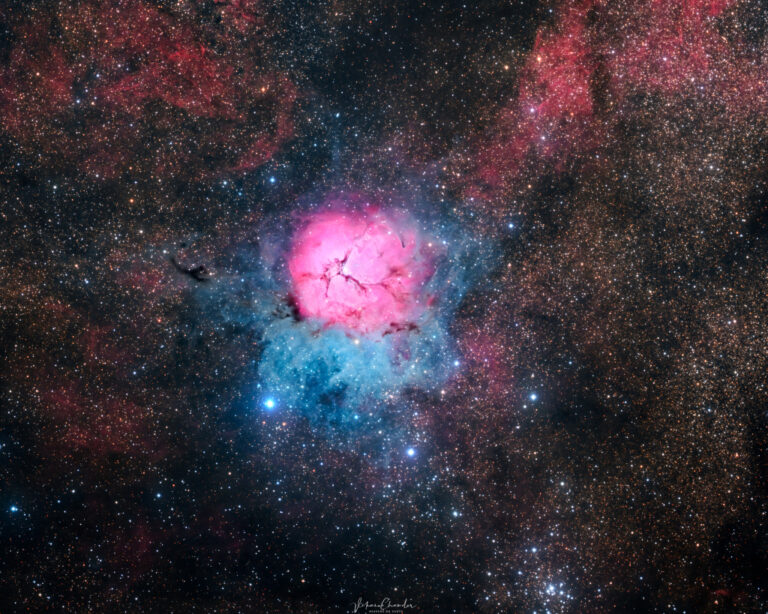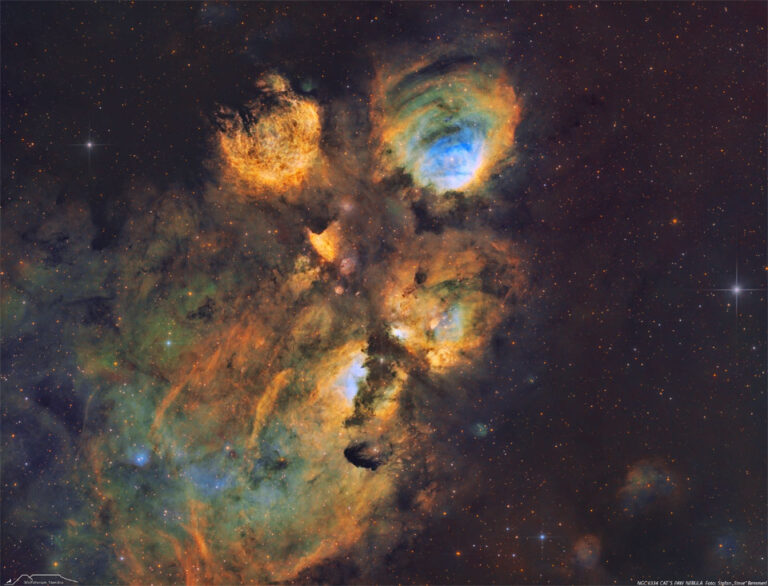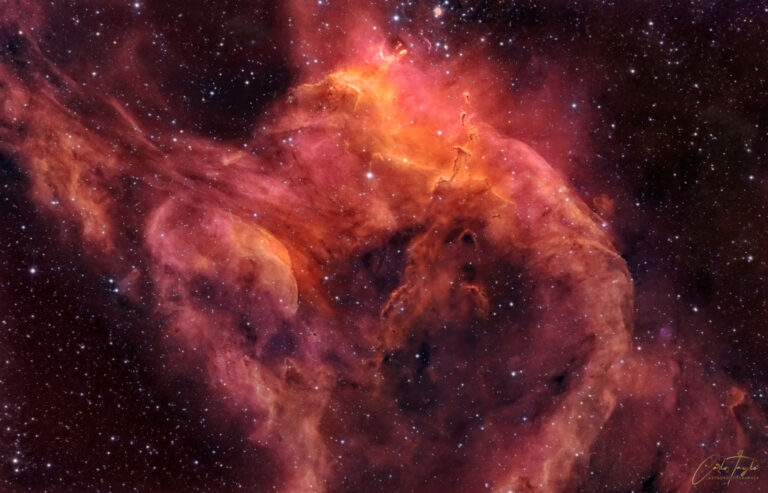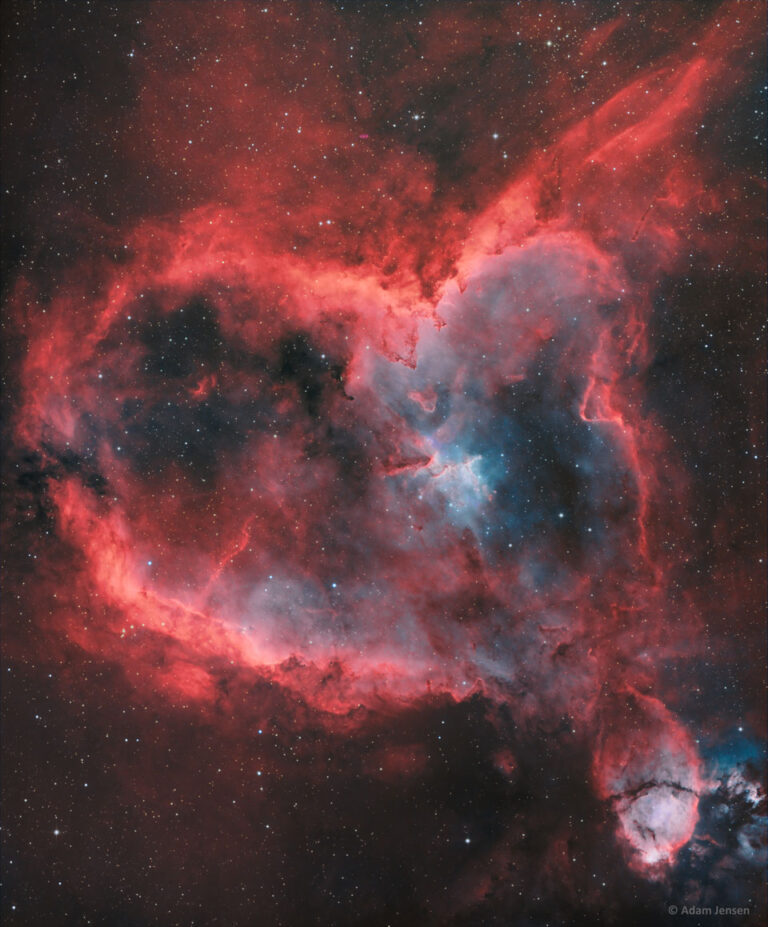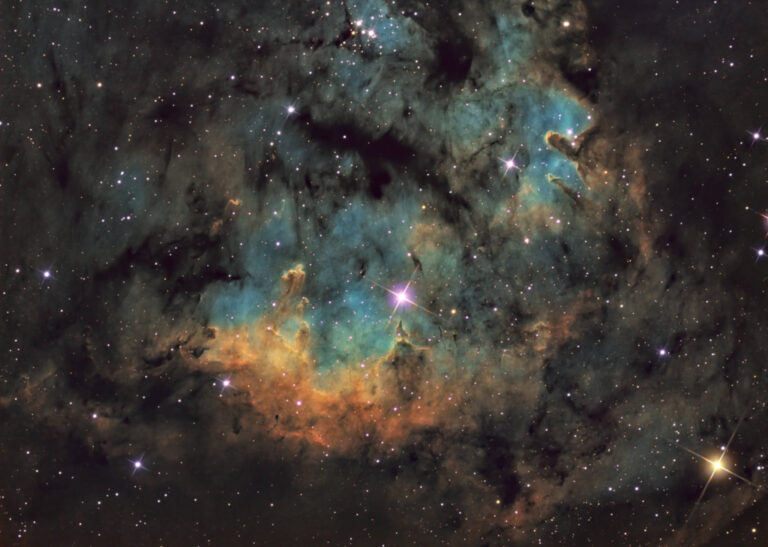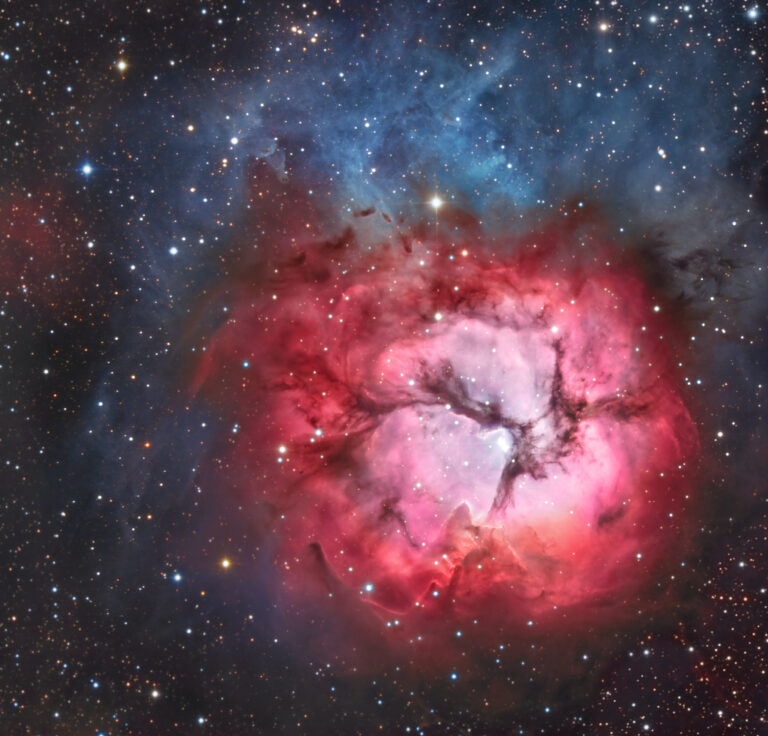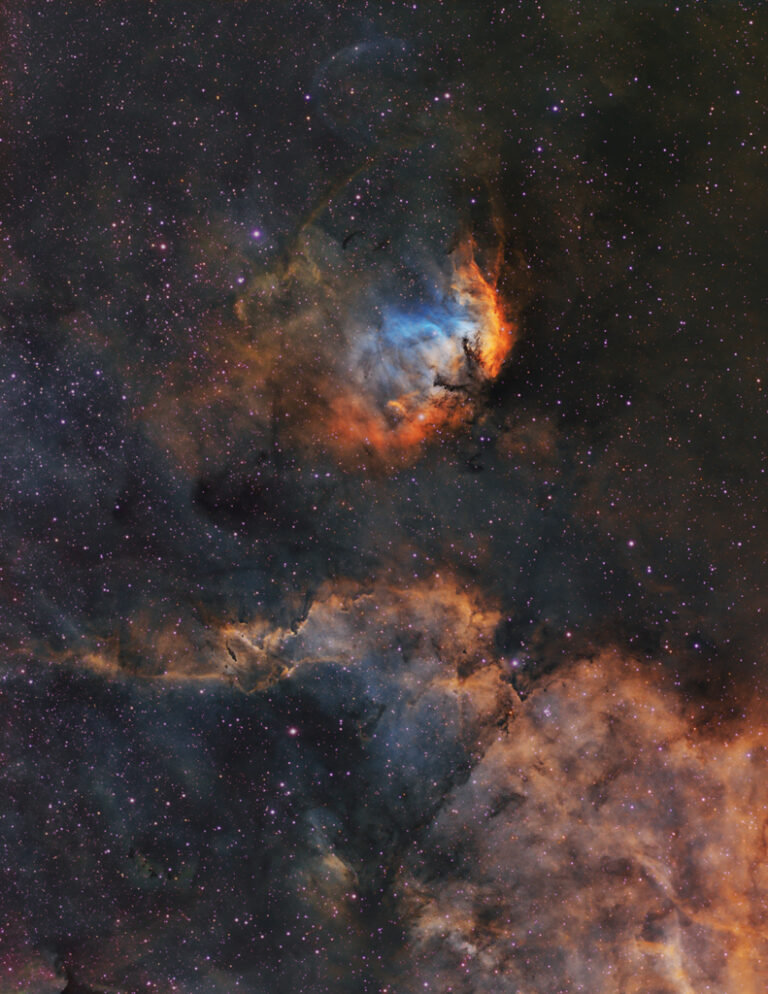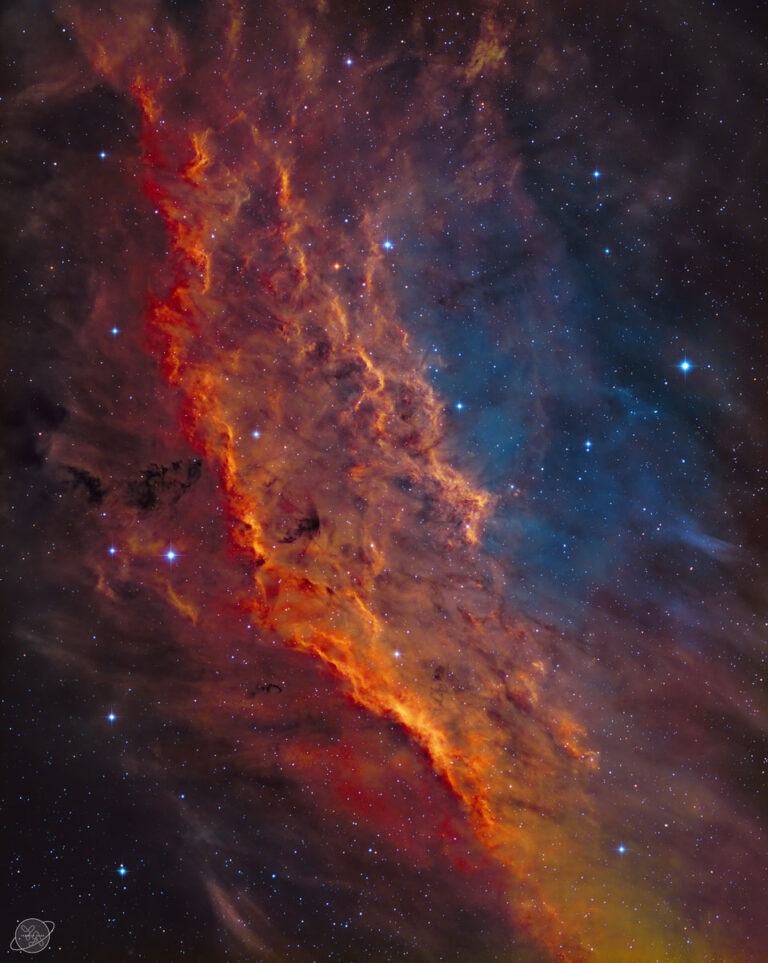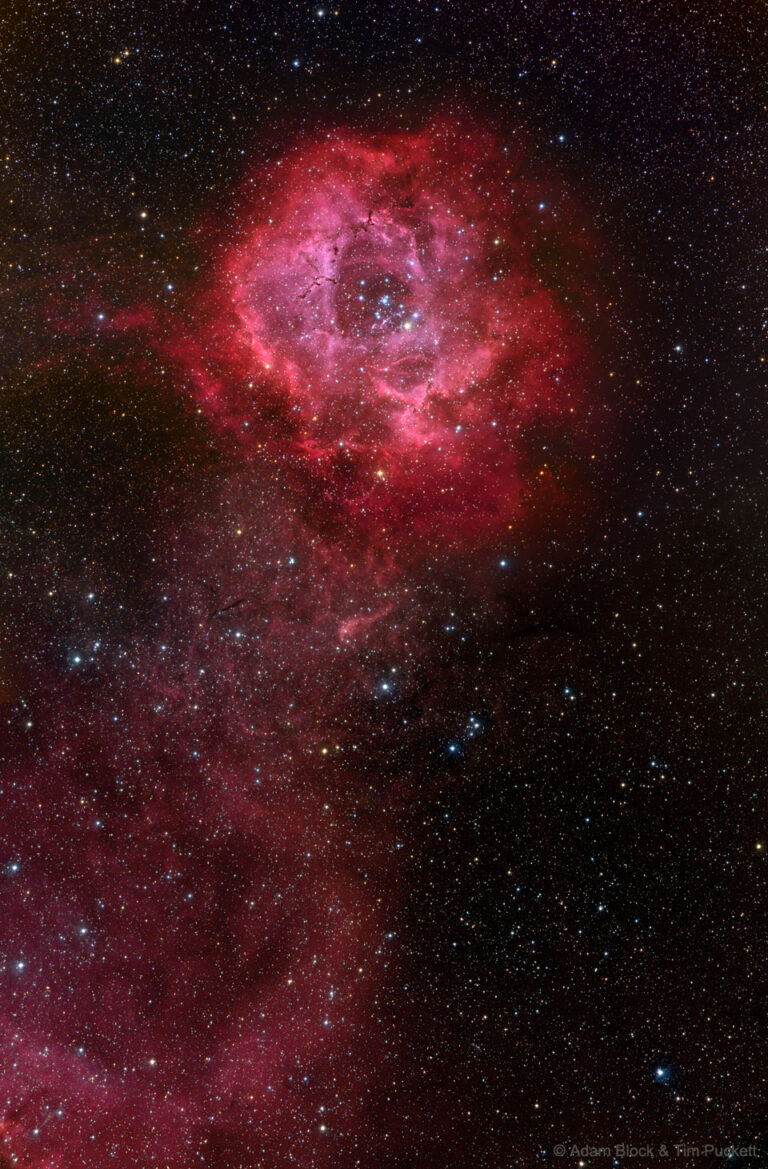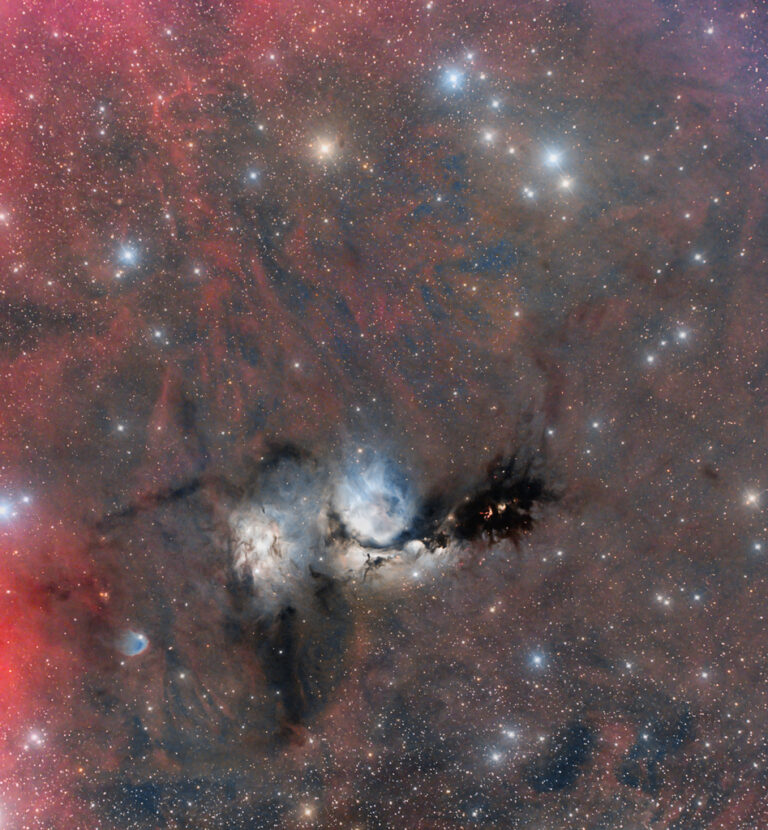美丽的三叶星云
2022年8月5日 A Beautiful Trifid Image Credit & Copyright: Vikas Chander Explanation: The beautiful Trifid Nebula is a cosmic study in contrasts. Also known as M20, it lies about 5,000 light-years away toward the nebula rich constellation Sagittarius. A star forming region in the plane of our galaxy, the Trifid does illustrate three different types of astronomical nebulae; red emission nebulae dominated by light from hydrogen atoms, blue reflection nebulae produced by dust reflecting starlight, and dark nebulae where dense dust clouds appear in silhouette. But the red emission region, roughly separated into three parts by obscuring dust lanes, is what lends the Trifid its popular name. Pillars and jets sculpted by newborn stars, above and right of the emission nebula’s center, appear in famous Hubble…

